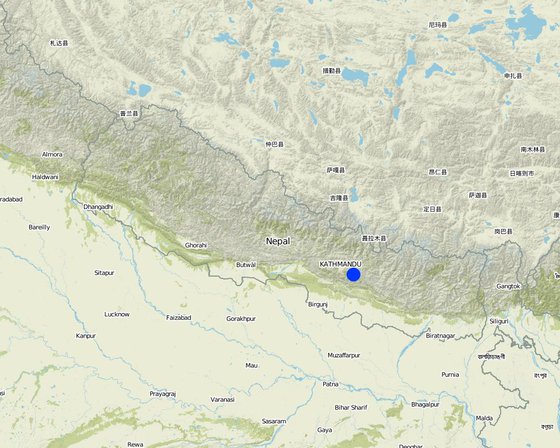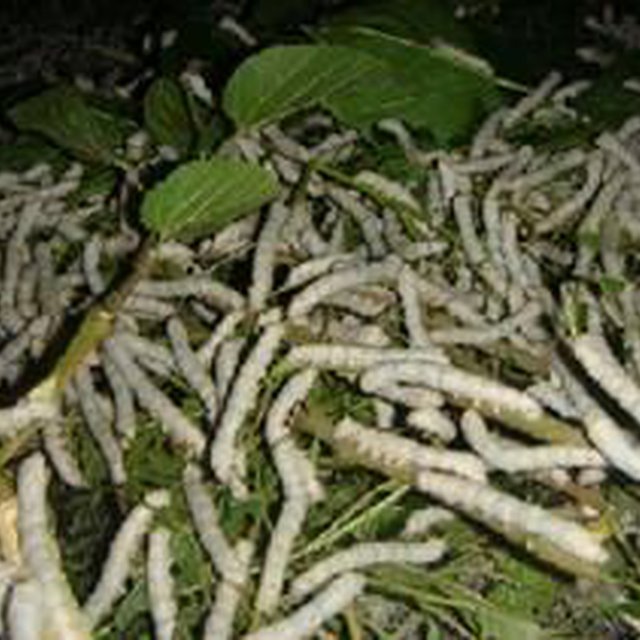

After the plantation of mulberry plants. They are ready to be eaten by silkworm. Firstly, silkworm eggs must be stay between 25 to 31 "C in tray or petric dish. In this area silkworm are brought from silkworm industry of khopasi. The larvae must be transfer to clean tray with freash food. A time came in larval stage when larvae eats huge amount of mulberry and grow more than 5cm long. After enough eating, larvae raise their heads as it shows sign for cocoon formation. Then, the worm is kept in another circular bamboo which will make cocoon more uniform in slope and easier to collect silkworm by contracting secrets from an opening under its mouth a steady stream of liquid silk coated with sericine which darkens on exposure. It takes 25 days to form cocon.
Purpose of the Technology: The main purpose of planting mulberry plant is for producing silkworm to increases economic condition of farmer.
Establishment / maintenance activities and inputs: For over two years people have been implementing these technology.They took training from the khopasi silkworm institution.They have get external inputs.While getting training,maintenance has been carried out when the plants are not grown enough.While producing the silkworm (larva to cocoon) maintenance is carried out as keeping them in clean environment without reaching another species around them.
Natural / human environment: The natural environment is tropical with temperature ranging from 20 to 25°C .The population density is sparse with the community relying heavily on agriculture.

地点: Kavre, Chamryang Besi, 尼泊尔
分析的技术场所数量:
技术传播:
在永久保护区?:
实施日期: 50多年前(传统)
介绍类型




| 对投入进行具体说明 | 单位 | 数量 | 单位成本 (美元) | 每项投入的总成本 (美元) | 土地使用者承担的成本% |
| 设备 | |||||
| Bringing silkworm | silkworms | 2000.0 | 0.01 | 20.0 | 100.0 |
| 技术维护所需总成本 | 20.0 | ||||
| 技术维护总成本,美元 | 20.0 | ||||